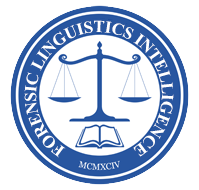Return: Books & Publications
Excerpts from Word Crime
Forensic linguistics and murder
Who would imagine that forensic linguistics and the parish of Cranage in the county of Cheshire would ever cross paths? The village was, a very few years ago, the scene of a tragic slaying. In this case an innocent woman had been murdered, and the suspicion was that the murderer sent texts from her phone pretending to be her: forensic authorship.
While some murders are committed in a moment of anger, and probably often immediately regretted by the perpetrator, others are planned in the cold light of day. A barrister of my acquaintance informs me that not all murderers are foul, reprehensible people. He says that most of the murderers he has dealt with are pleasant, even courteous. Be that as it may, there are many who will not hesitate to kill another human being in order to remove what they consider to be a ‘problem’. One such person, according to the facts of the case, was David Ryan, a now former resident of Altrincham, Manchester.
The reader will appreciate that when I become involved in an investigation I very often do not know the nature of the crime being investigated, nor even the names of the individuals involved. In the present case, I was, at my own request, kept entirely in the dark as to the details. There are good reasons for this.
Firstly, it is too easy to be influenced by what you know or – worse – what you think you know. Most of us are, quite rightly, horrified by violent crime, and if we become aware of the details in a particular case, we might easily form an irrational view as to a suspect’s involvement. This is part of a psychological process termed cognitive bias. Everyone is susceptible. In order to avoid it, I always ask police officers to give me only as much information as is necessary for me to reach an opinion. For example, I do not need to know the names of suspects or victims. I certainly do not need to know the details of the crime: this especially applies to violent crime. In reality, in most cases, I only need to see one or more sets of documents or texts. There is no reason for these to be referred to in a way which would identify anyone. For example, they can be labelled ‘Author A’, ‘Author B’, ‘Questioned Text 1’, ‘Questioned Text 2’, etc. Individual and place names can be redacted.
Dr John Olsson, Forensic Linguist
Excerpts from Word Crime
Forensic linguistics and murder
Forensic linguistics and police statements
The Prosecutor of the ICC v the President of Kenya
The missing flight attendant and the concrete tomb
